MOTU Microbook II parametric filters
Following my post on the Microbook II highpass and lowpass filters, I decided to plot out the parametrics too. One reason for this is that the Microbook has four different “types” of parametric EQ. The CueMix FX manual describes the different types, but I wanted to measure them for myself. For each type, I measured the response with 20, 10, -10, and -20 dB of gain, and at the lowest Q (0.01, in blue), a Q of 2.0 (in green), and maximum Q of 3.0 (in red).
A point to note, which I don’t think is mentioned in any of the Microbook II documentation: the EQ filters can only be used when operating at 44.1 or 48 kHz. At 88.2 and 96 kHz, the EQ window is blacked out with a message that EQ is not supported at “double sample rates.”
Parametric EQ
Here are the response curves of the four different parametric EQ types.
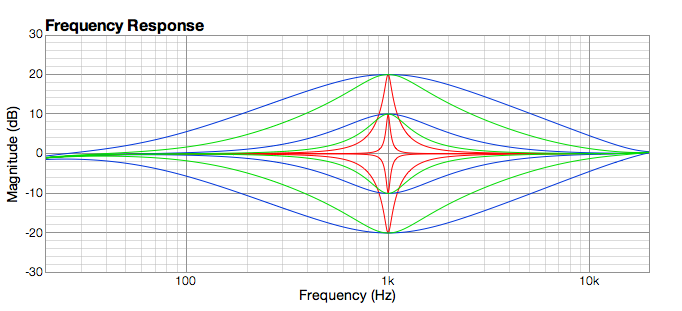
MOTU Microbook II Parametric EQ, Type I
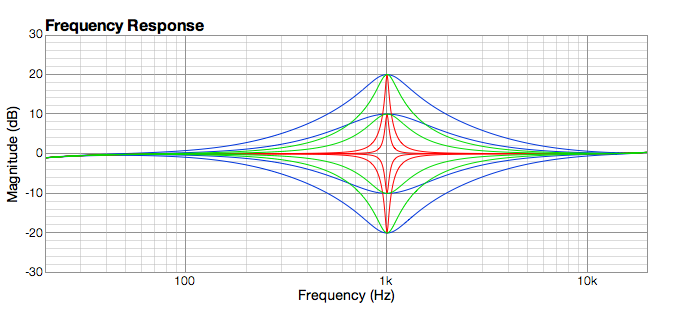
MOTU Microbook II Parametric EQ, Type II
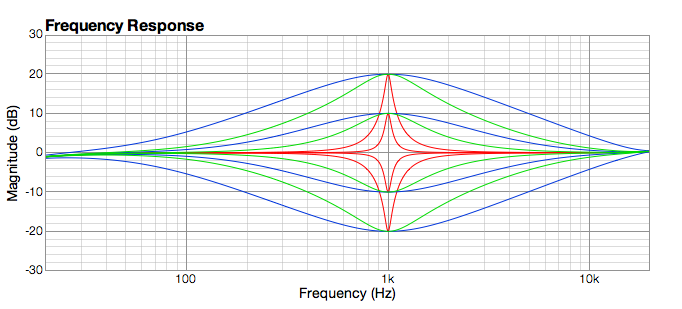
MOTU Microbook II Parametric EQ, Type III
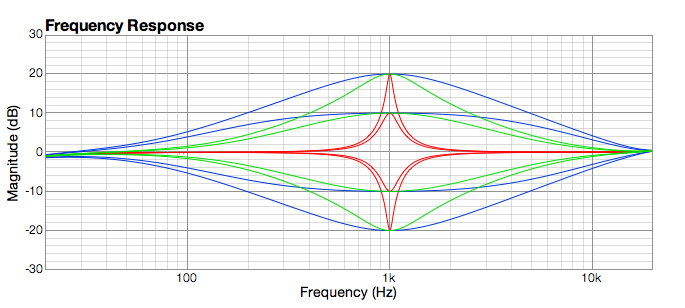
MOTU Microbook II Parametric EQ, Type IV
The Microbook II manual describes the different types in terms of their subjective effect and relates them to specific “vintage EQ” types. For the purposes of loudspeaker and room equalization, though, the easiest ones to use will be those types that have a fairly constant bandwidth with gain. So I’d use Type II most of the time, or Type IV if a very broad filter is needed.
High-shelf and low-shelf filters
One filter can be set to be a high-shelf, and one can be set to a low-shelf. The responses are below. The surprise with these filters was that they max out at +/-12 dB of gain. So, even though CueMix FX shows 20dB of gain applied, it’s really only 12 dB. I’ve only shown the max curves for the low-Q case, to avoid cluttering the graphs.
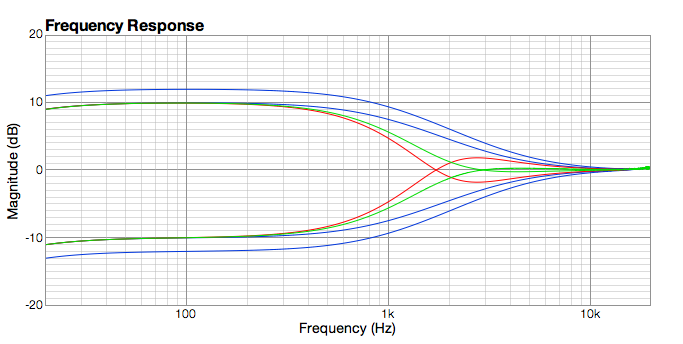
MOTU Microbook II Low-shelf filter

MOTU Microbook II High-shelf filter
They seem to work well enough. Except at high Q values, the frequency setting is not half gain, though, which might be something to be aware of.
In the manual, they say “The Type II EQ filter produces constant Q response during boost or cut.” This doesn’t seem right. According to everyone else, the constant Q is more like Type I:
http://rane.com/par-c.html#constant_Q
http://www.klarkteknik.com/faq-06.php
Hi “…” 🙂
Interesting point. I looked around a little and there do seem to be varying definitions of “bandwidth” (=1/Q) for a peaking/notch filter. One way to experiment with this (without actually having the units) is the EQ window in Room EQ Wizard. While the -3 dB point makes sense for bandpass filters and maybe a graphic EQ (*), parametrics (digital ones anyway) seem to often use the dB half-scale value i.e. -5 dB for a 10 dB peak, -1 dB for a 2 dB peak, etc. By that definition Type II in the MicroBook does seem to be “constant Q.”
(*) I never understood how this definition can be correct even for a graphic, as the Q is undefined if boost is < 3 dB... Thank you for your interesting comment.